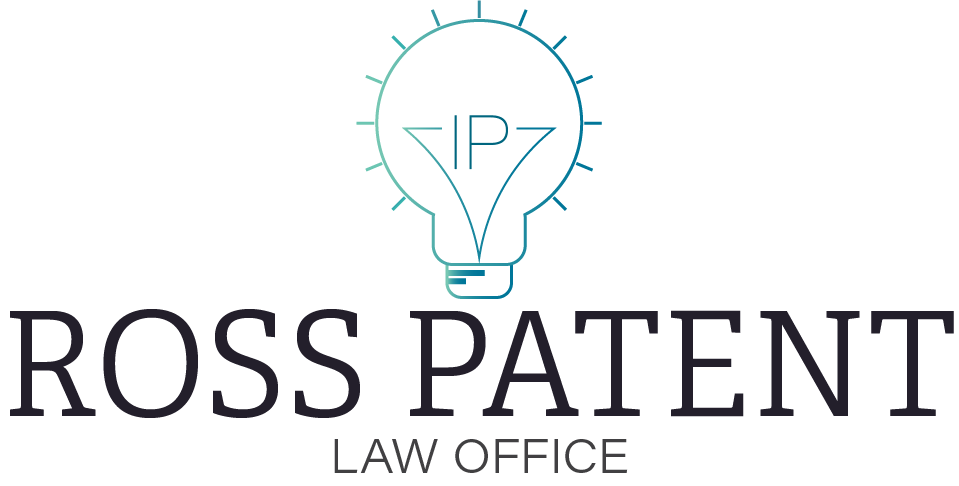Ross Patent Law Office is a family owned small business dedicated to protecting your intellectual property rights.
PATENTS
What is a Patent?
A U.S. patent confers to the patent owner "the right to exclude others from making, using, offering for sale or selling the invention throughout the United States or importing the invention into the United States" and its territories and possessions.
A patent application is filed at the United States Patent and Trademark Office in order to obtain a grant of a patent for the invention described and claimed.
Types of Patent Applications
NOn-Provisional (Utility) Patent Application
A non-provisional patent application (also known as a utility patent application) is filed in order to obtain a utility patent.
A utility patent protects the way an invention is used and works.
Utility patents may be granted to anyone who invents a new and useful method, process, machine, device, manufactured item, or chemical compound - or any new and useful improvement to the same.
The term of a utility patent shall be 20 years from the date on which the application for the patent was filed in the United States or, if the application contains a specific reference to an earlier filed application under 35 U.S.C. 120, 121 or 365(c), from the date of the earliest such application was filed, and subject to the payment of maintenance fees as provided by law.
Provisional Patent Application
A provisional application is a U. S. national application for patent filed in the United States Patent and Trademark Office under 35 U.S.C. § 111(a) that allows filing without a formal patent claim, oath or declaration, or any information disclosure (prior art) statement.
It provides the means to establish an early effective filing date in a later-filed non-provisional patent application filed under 35 U.S.C. § 111(a). It also allows the term "Patent Pending" to be applied in connection with the description of the invention.
A provisional application has a pendency lasting 12 months from the date the provisional application is filed. The 12-month pendency period cannot be extended. Therefore, an applicant who files a provisional application must file a corresponding non-provisional patent application during the 12-month pendency period of the provisional application in order to benefit from the earlier filing of the provisional application.
In accordance with 35 U.S.C. § 119(e), the corresponding non-provisional application must contain or be amended to contain a specific reference to the provisional application within the time period and in the manner required by 37 CFR 1.78.
Design Patent Application
A design patent protects the ornamental features of an article of manufacture.
For example, the subject matter of a design patent application may relate to the configuration or shape of an article, to the surface ornamentation applied to an article, or to the combination of configuration and surface ornamentation.
A design for surface ornamentation is inseparable from the article to which it is applied and cannot exist alone. It must be a definite pattern of surface ornamentation, applied to an article of manufacture.
Plant Patent Application
A plant patent is granted by the Government to an inventor who has invented or discovered and asexually reproduced a distinct and new variety of plant, other than a tuber propagated plant or a plant found in an uncultivated state.
The grant, which lasts for 20 years from the date of filing the application, protects the inventor's right to exclude others from asexually reproducing, selling, or using the plant so reproduced.
International Patent Application
A patent application filed under the Patent Cooperation Treaty (PCT) is called an international application or PCT application.
The Patent Cooperation Treaty is an international patent law treaty that provides a unified procedure for filing patent applications to protect inventions in each of its Contracting States.
One major advantage of filing a PCT application is that it allows the Applicant time to delay costs associated with filing patent applications in foreign countries.
In most Contracting States in the PCT there is a 30 month deadline (measured from the Priority Date) to file a foreign application in designated foreign countries or regions. Prior to the 30 month deadline the applicant must decide if he wants to enter the national or regional phases by filing in individual foreign countries or foreign regions.
By first filing in the PCT, the Applicant is able to access the commercial viability of his invention for up to a 30 month period before he makes the commitment to file in foreign countries. If the Applicant decides not to enter the national stage prior to the 30 month deadline, his PCT application will abandon.
